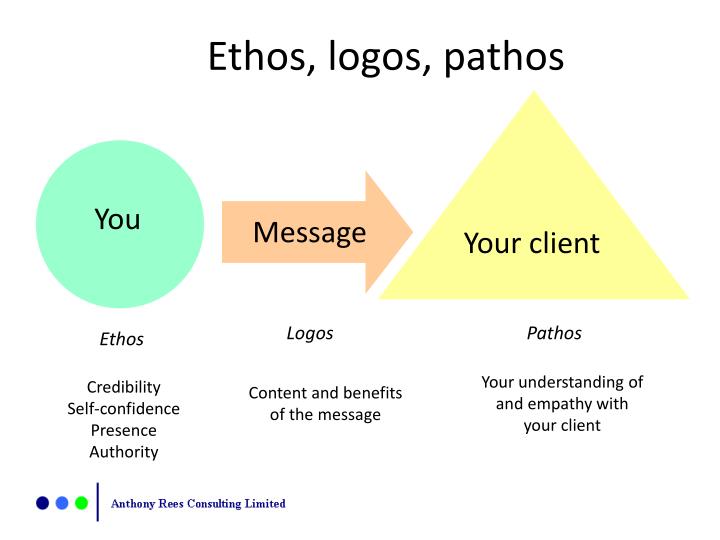
In the following passage, examine how writers used different rhetorical approaches to prove their points. Some subjects only require to be discussed logically and factually.Īlthough appeals depend on the writer’s preference, you still need to learn their usage. Not every topic allows a writer to engage the audience’s emotions. Picking the strategy depends on the theme of the assignment. You can also use logos to present your point logically. If you are assigned an argumentative paper, choose ethos, or pathos to get an emotional response. Using rhetorical appeals correctly can be difficult, but everything can be learned through practice. Paper Due? Why suffer? That’s our job! Click here to learn more. The Merchant of Venice by William Shakespeare.Many famous works of literature used the logos approach and attempted to convince the audience.

Logos is a Greek word that means ‘reason’ or ‘plan.’ When using this approach to write your essays and papers, keep in mind that strong supporting evidence will be required. In this, the writer forms his standpoint and proves it using a logical fallacy, reasoning, and facts.

Other literary works, like Pride and Prejudice, and The Adventures of Tom Sawyer also used pathos to persuade the audience.Īs the name suggests, logos is a logical appeal that convinces the audience through facts and other reliable information. William Shakespeare used pathos in a lot of work, including Romeo and Juliet. People will listen and read anything that will be emotionally charged.Īccording to this strategy, the creator of the content forms an argument and defends it using convincing stories and experiences. Writers believe that the best way to persuade people from their writings and speeches is through emotions. Pathos is a rhetorical appeal that triggers and aims at the emotions of the people. From Harper Lee’s ‘To Kill a Mockingbird’ to John Steinbeck’s ‘East of Eden’, the use of ethos can be seen. Throughout history, writers from every field have been using this approach to persuade their readers. When drafting any sort of persuasive or argumentative content, this appeal can be really helpful. The writer uses the strength of his character to put forward his idea and make people understand and believe it. This appeal uses credibility, authority, and the character of the speaker to make people believe in the specific concept or idea. Continue reading to understand the basic definition and purpose of Aristotle’s modes of persuasion.Īn ethos sometimes called an appeal to ethics is a mode of persuasion that a writer uses to convince the audience. Aristotle came up with the ‘modes of persuasion that included three major techniques to convince the readers of your argument.įollowing are the three appeals. This is because convincing the targeted audience requires the writers to use different persuasive appeals keeping in view the writing theme.Īll persuasive and argumentative writings, including rhetorical analysis, speech writing, and advertising, convince the audience using different strategies. Persuading people from your point of view may sound simple, but in reality, it can be really challenging.

Continue reading the article to understand the correct usage of rhetorical appeals. These strategies include three major appeals ethos, pathos, and logos. Persuading the audience requires a writer to use different strategies. If you successfully persuade the audience to your point, the purpose of drafting the content is served. The core element that makes your argumentative paper successful is the persuasion of the readers. This rhetorical analysis essay reflects the writer’s skills to form an opinion and how well the audience understands it. Argumentative writing is that essential part of academics that is assigned to every student of every level.


 0 kommentar(er)
0 kommentar(er)
